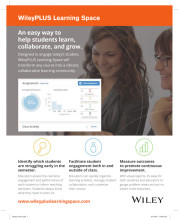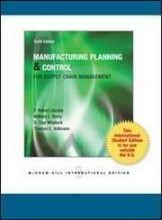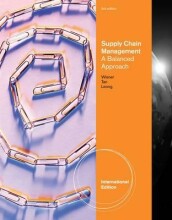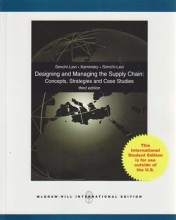Summary: Supply Chain Logistics Management | 9780071326216 | Donald J Bowersox, et al
- This + 400k other summaries
- A unique study and practice tool
- Never study anything twice again
- Get the grades you hope for
- 100% sure, 100% understanding
Read the summary and the most important questions on Supply chain logistics management | 9780071326216 | Donald J. Bowersox, David J. Closs, M. Bixby Cooper.
-
1 21st-Century Supply Chains
This is a preview. There are 28 more flashcards available for chapter 1
Show more cards here -
What are the changes since 1990's supply chains?
Nowadays, customers want to have a wide range of products which they can customize and which can be delivered very fast. Massive change has occured as a result of available information technology (IT). Nowadays, information is characterized by speed, accessibility, accurancy and relevancy. Because of this, a global economy has emerged.
In the information age, reality and connectivity among businesses create new types of relationships called supply chain management. Because of this, products can be manufactured to exact specifications, delivered fast and with a zero - defect (Six Sigma) performance. -
What are the 3 value's and their matching strategies?
- Economic value -> builds on economy of scale in operations as the source of efficiency -> manufacturing strategy
- Market value -> is about presenting an attractive assortment of products at the right time and place to realize effectiveness. This value focuses on economic of scope -> distribution strategy
- Relevancy value -> involves customazation of value-adding services that make a real difference to customers. -> supply chain strategy
-
What are the 5 elements that causes synergy in the supply chain alignment model?
- Information
- Product
- Service
- Financial
- Knowledge
-
To realize better integration within the supply chain and eventually lower total process costs, there are some crucial factors:
- Enterprise extension
- Integrated service providers (ISP)
-
Enterprise extensions builds on two basis paradigms:
- Information sharing paradigm
- Process specialization paradigm
-
What are the two types of responsiveness?
- push model -> based on forecast, produce no matter what, and use of inventory
- pull model -> demand driven, when there is an order, the product will be assembled/manufactured
-
What are integrated service providers?
These providers began to market a range of logistics services that include all work necessary to accommodate customers, ranging from order entry to product delivery. -
What are the advantages of manufacturing postponement?
- reduces the number of stock keeping units in logistical inventory while supporting broad-line marketing effort and retaining mass manufacturing economies of scale
- until the product is customized, it has the potential to serve many different customers -
1.1 The supply chain revolution
This is a preview. There are 1 more flashcards available for chapter 1.1
Show more cards here -
Describe the Supply chain revolution.
Supply chain revolution: during the Industrial revolution, firms began to realise they could not totally self - sufficient. They started developing business relations to jointly perform essential activities. However, primarily due to a lack of high - quality information, each firm within the channel would first go for its individual goals instead of the general goal. During the last decade of the 20th century, channel strategy and structure began to shift towards integration and collaboration. -
1.3 generalized Supply chain model
-
Describe the generalized supply chain model.
The concept of an integrated supply chain links participating firms into a coordinated competitive unit. Value is created by 5 critical flows: information (facts related), product, service, financial and knowledge (knowhow, the way of doing things). The message conveyed by the figure is that the integrated value - creating process must be aligned and managed from material procurement to end - customer product/ service delivery in order to achieve effectiveness, efficiency, relevancy and sustainability.
- Higher grades + faster learning
- Never study anything twice
- 100% sure, 100% understanding
Topics related to Summary: Supply Chain Logistics Management
-
21st-Century Supply Chains - Responsiveness
-
21st-Century Supply Chains - Financial Sophistication
-
21st-Century Supply Chains - Globalization
-
Logistics - The work of logistics
-
Logistics - Logistical operating arrangements
-
Logistics - Supply chain synchronization
-
Customer relationship management - Developing customer relationship strategy
-
Integrated operations planning
-
Transportation - Transport functionality and participants
-
Transportation - Transportation Economics and Pricing
-
Transportation - Transport Management
-
Transportation - Documentation
-
Warehousing - Strategic warehousing
-
Warehousing - Warehouse operations
-
Warehousing - Warehouse decisions
-
Packaging and handling - Handling
-
Network design - Enterprise facility network
-
Network design - Network Design Key Components (lecture)

































